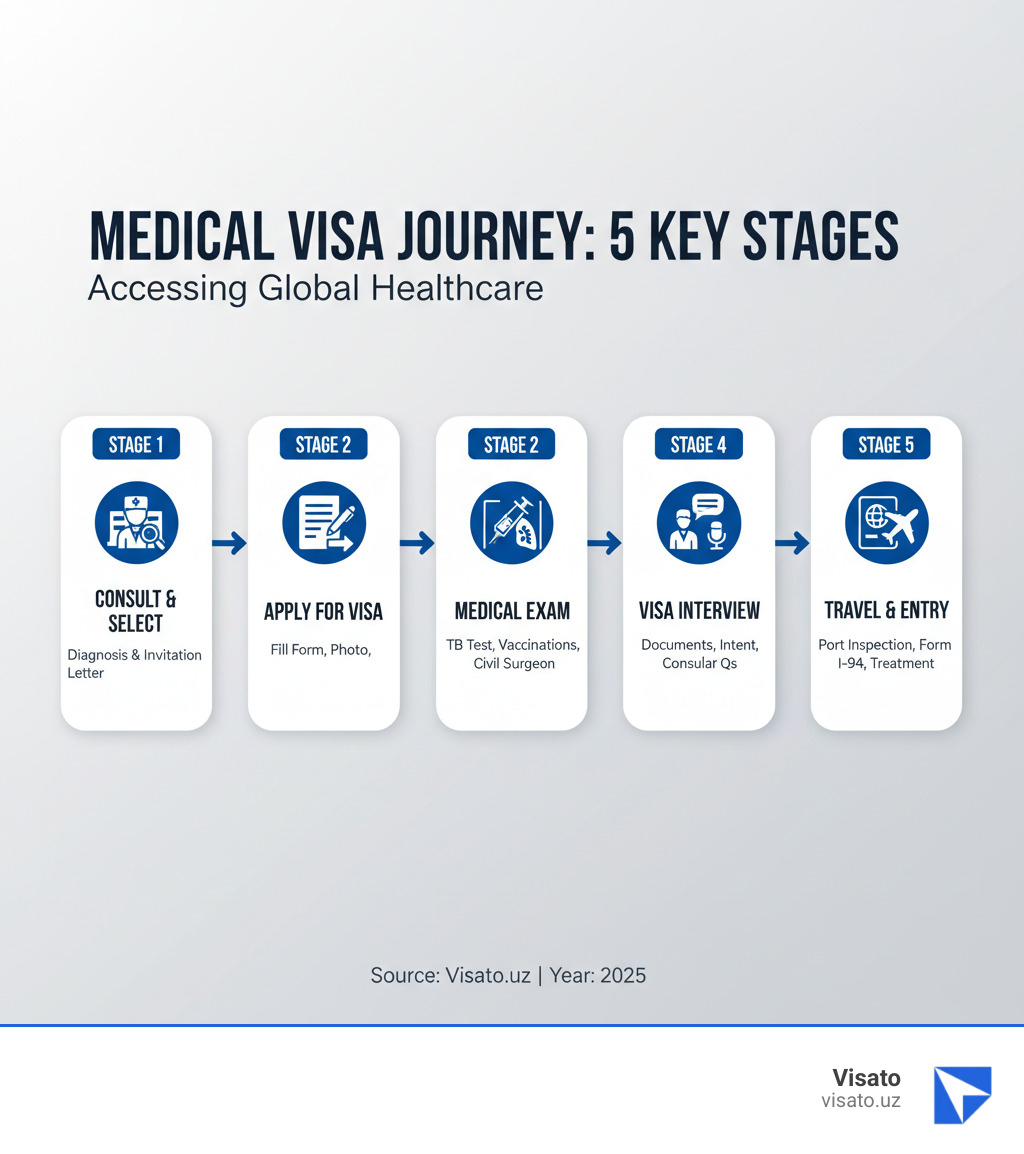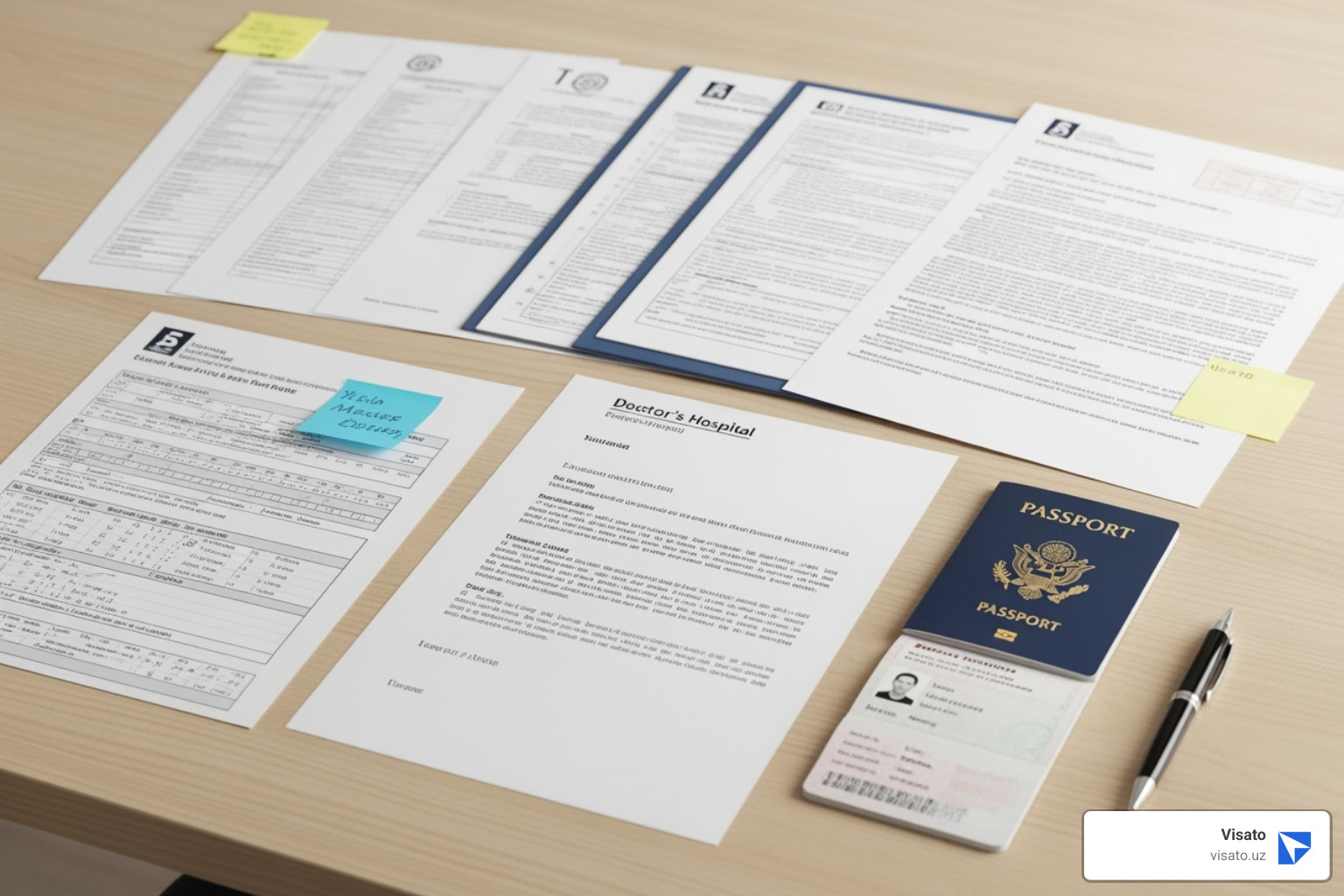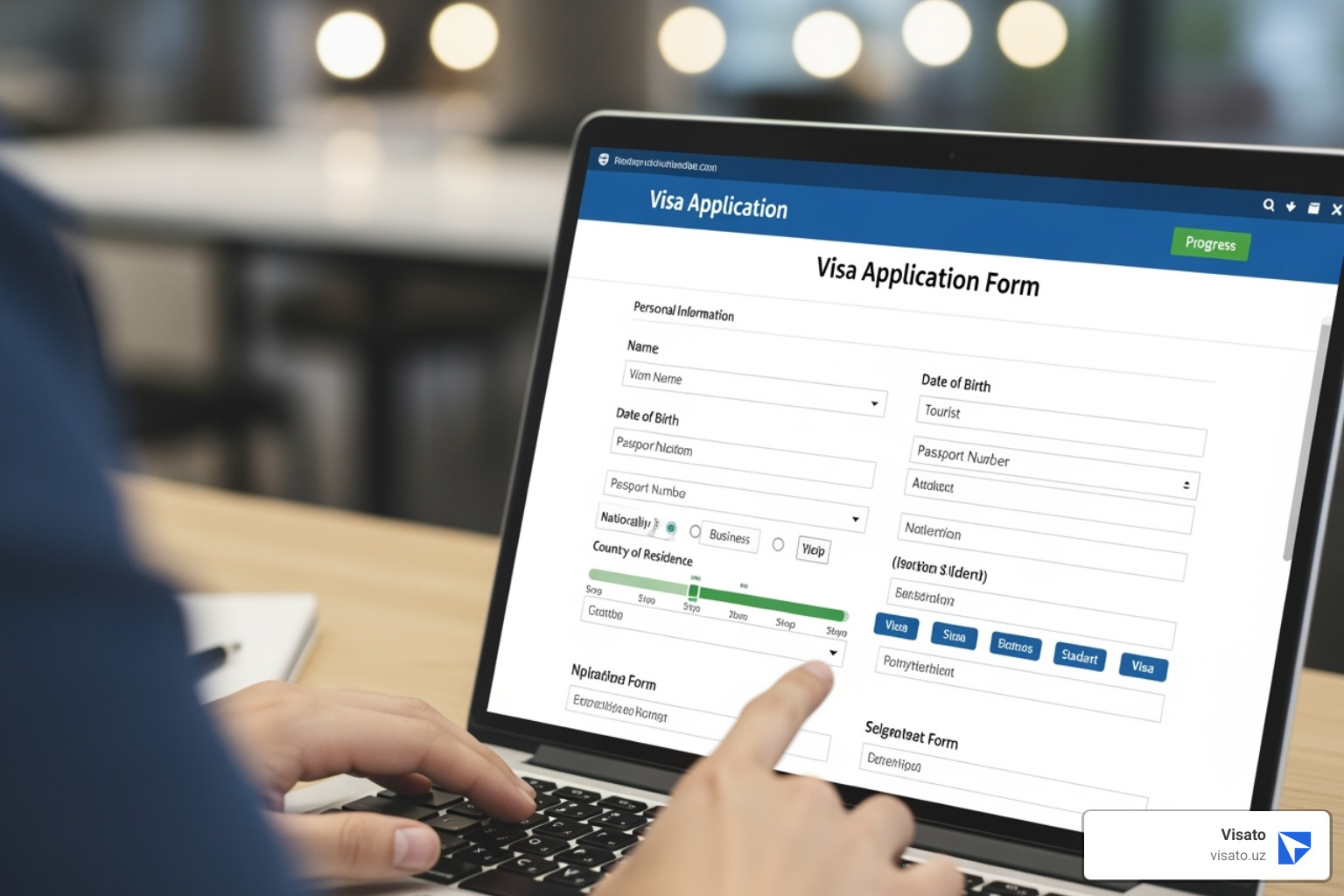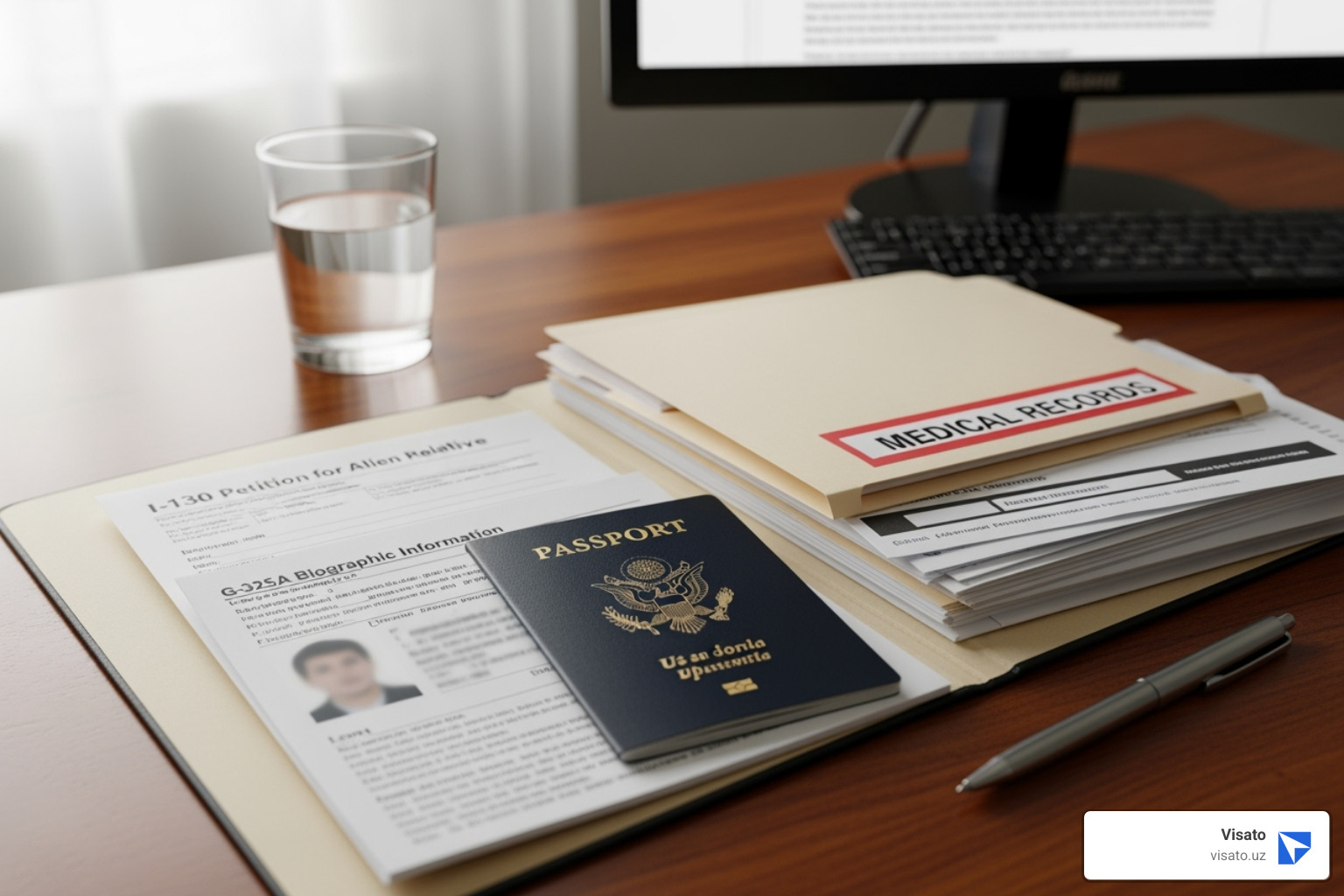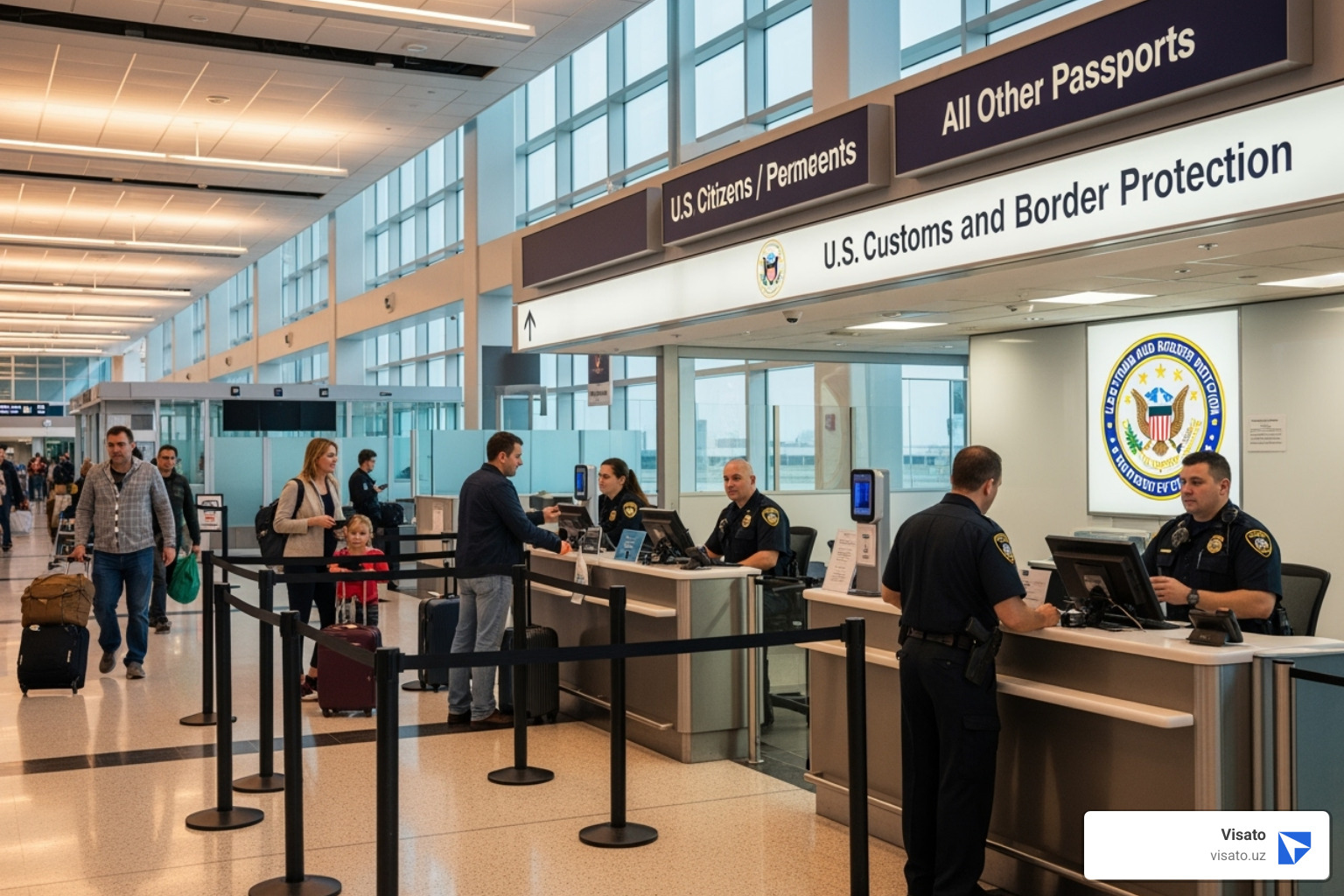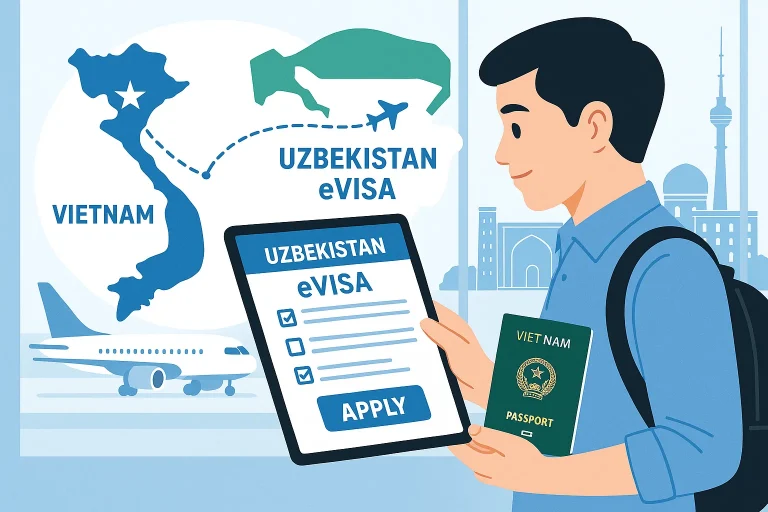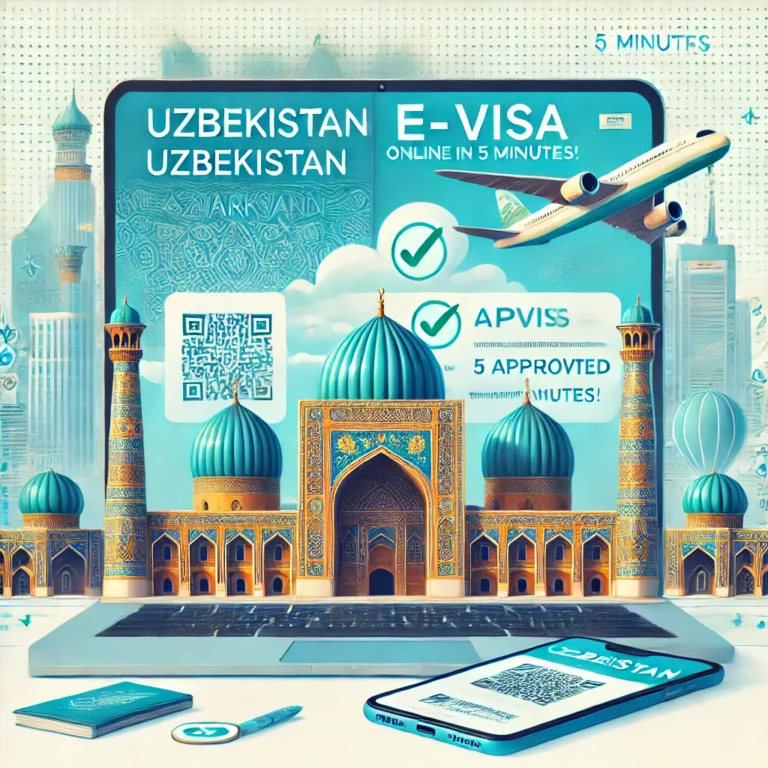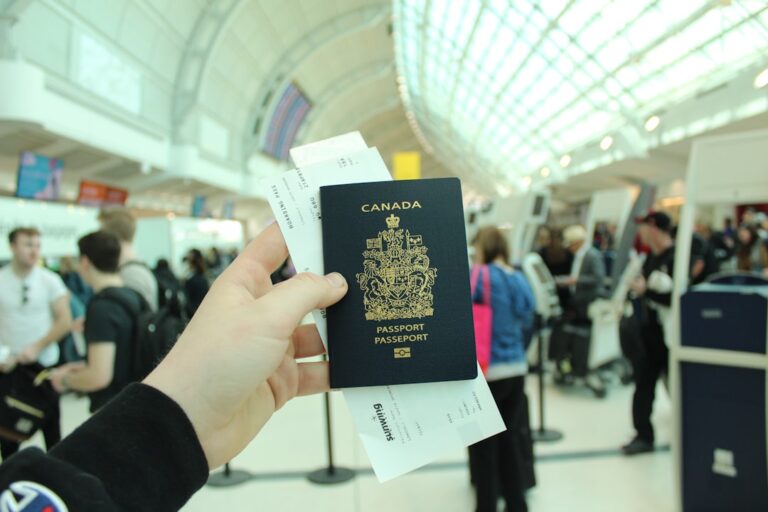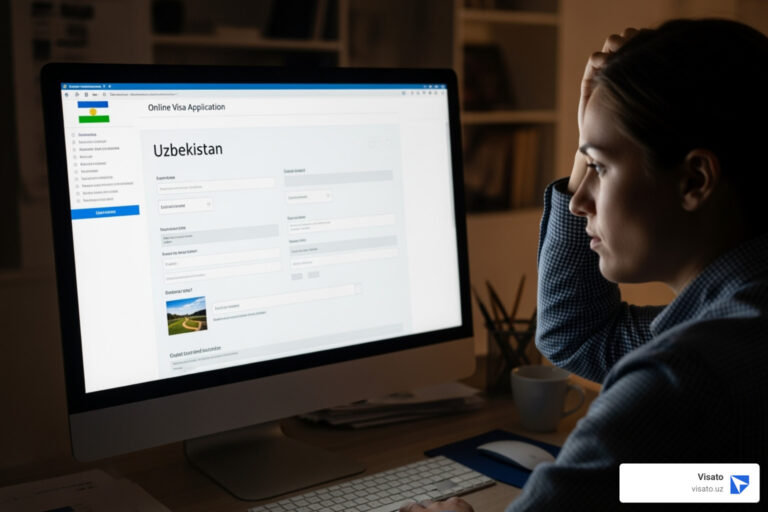Why a Medical Visa Application Form Matters for International Treatment
A Medical visa application form is the official document required to legally enter another country for medical treatment. This form establishes your legitimate medical need, proves financial capability, and demonstrates your intent to return home after treatment is complete.
Quick Answer: What You Need for a Medical Visa Application
- Completed visa application form (e.g., DS-160 for the U.S.)
- Medical diagnosis from your current physician
- Invitation letter from the foreign hospital
- Proof of financial means (bank statements, sponsorship letters)
- Valid passport (minimum 6 months validity)
- Medical examination results (TB screening, vaccinations)
- Proof of ties to home country (employment, property, family)
Each year, thousands of patients seek specialized care abroad, from cancer treatment to organ transplants. The application process varies by country; the U.S. requires Form DS-160 and a medical exam, while India uses a specific e-visa portal. The stakes are high, as an incomplete application can delay urgent treatment or result in visa denial. Unlike tourist visas, medical visas have strict documentation requirements to verify your medical need and ensure you will return home.
The process typically involves securing a hospital invitation, completing visa forms, undergoing health screenings, attending a visa interview, and providing financial proof. The complexity increases when family members need to accompany the patient, as they often require separate Medical Attendant Visas. Minors also face additional requirements, such as notarized parental authorization.
I’m Nariman Huseynov, and over the past 5 years at Visato.uz, I’ve guided thousands of travelers through visa processes, including assisting patients with Medical visa application form requirements. While our primary focus is Uzbekistan e-visas, understanding global medical visa protocols has been essential in helping travelers access the healthcare they need.
Understanding Medical Visas: Purpose, Types, and Eligibility
When you fill out a Medical visa application form, you are formally requesting permission to enter a country for medical treatment. Immigration authorities use this form to verify that your travel is for legitimate healthcare purposes and that you will return home afterward.
Your application must answer four key questions: Why do you need treatment abroad? Where will you receive care? How will you pay for it? And will you go home afterward?
Your eligibility for a medical visa depends on meeting these core requirements:
- Legitimate medical condition: You need a diagnosis from a local doctor confirming that treatment is required in the destination country.
- Accepted by a medical facility: You must have an official invitation letter from a recognized hospital confirming they will provide treatment.
- Financial capability: You must prove you can afford all medical and travel expenses without relying on public services.
- Intent to return home: You must demonstrate strong ties to your home country, such as employment, family, or property.
Medical Visa vs. Medical Attendant Visa: What’s the Difference?
Patients often travel with a family member or caregiver for support. This requires understanding the difference between a Medical Visa (for the patient) and a Medical Attendant Visa (for the companion).
| Feature | Medical Visa (for the Patient) | Medical Attendant Visa |
|---|---|---|
| Who it’s for | The patient seeking medical treatment | The accompanying family member or caregiver |
| Medical documentation | Requires detailed medical reports from home country doctor | Requires proof of relationship to patient and reason for accompanying |
| Hospital invitation | Requires official invitation letter from destination hospital | Requires attendant’s name in patient’s invitation letter or separate hospital letter confirming need |
| Financial proof | Patient must prove ability to cover treatment and living expenses | Attendant must prove ability to cover own expenses, or patient’s proof must cover both |
| Visa validity | Tied to estimated duration of treatment | Typically tied to the patient’s Medical Visa validity |
| For minors | Minors requiring treatment need their own Medical Visa | Minors accompanying a patient (not for treatment) may require an Entry Visa (X-Misc) in some countries like India |
The key difference is the patient versus companion role. Each person needs a separate application. The patient’s focuses on medical necessity, while the attendant’s focuses on their support role.
When minors need medical treatment abroad, additional documents are required, including a notarized Parental Authorization Form, the child’s birth certificate, and copies of the parents’ passports. The accompanying parents or guardians apply for Medical Attendant Visas.
If you previously held citizenship in your destination country, you may need to provide proof of renunciation, such as a certificate from the embassy, before applying for a visa.
Want to understand more about visa requirements that might apply to your specific situation? Learn more about visa requirements to see what documentation you’ll need for your journey.
How to Complete Your Medical Visa Application Form: A Step-by-Step Guide
Breaking down the Medical visa application form process into clear steps makes it far more manageable. Here is what you need to do, in order.
Step 1: Initial Consultation & Hospital Selection
First, obtain a diagnosis from your local physician that documents your medical condition and explains why you need treatment abroad. This report is the foundation of your application.
Next, secure an invitation letter from a foreign hospital. This letter must confirm they accept you as a patient and should include your full name, medical condition, proposed treatment plan, estimated duration, and cost. It should also name any family members or caregivers accompanying you.
Step 2: Filling Out the Online Medical Visa Application Form
Attention to detail is critical when completing your Medical visa application form. Most countries use online systems. For the United States, you will complete the DS-160 Online Nonimmigrant Visa Application. Ensure all information matches your supporting documents exactly.
Photo requirements are strict. For the U.S. DS-160, you need a 2×2 inch digital photo with a white background. If your photo is rejected, your application will be delayed. You will need a digital version for the upload and a physical print for your interview.
All visa applications require a non-refundable fee (e.g., $185 for U.S. visitor visas). Keep your payment receipt, as it is a required document. Before submitting, check specific country requirements for any destination-specific details.
Step 3: The Mandatory Immigration Medical Examination
Applicants must undergo a medical exam to ensure they do not have communicable diseases that pose a public health risk. This exam must be conducted by a government-approved physician, known as a “civil surgeon” in the U.S. You can find a designated Civil Surgeon online; you cannot use your regular doctor.
The exam includes vaccination requirements and tuberculosis screening. The U.S. follows specific Tuberculosis Technical Instructions for Civil Surgeons. Bring any records of past TB treatment. The doctor will also screen for other conditions. For U.S. applications, the results are placed in a sealed envelope (Form I-693). Do not open this envelope, as doing so will invalidate the exam.
Step 4: Attending the Visa Interview
The final step is the interview at the embassy or consulate. Organize your documents in a folder for easy access: passport, application confirmation, fee receipts, medical diagnosis, hospital invitation, financial proof, and the sealed medical exam envelope.
Be prepared to answer questions honestly about your medical condition, treatment plan, finances, and ties to your home country. The most important goal is to demonstrate non-immigrant intent—proof that you will return home after treatment. Evidence of employment, property ownership, or family responsibilities is crucial.
Schedule your interview at the embassy in your country of residence. You can find a U.S. Embassy or Consulate online. Arrive early, dress professionally, and be prepared to clearly explain your situation.
Essential Documents for a Successful Application
Getting your paperwork right is the most critical part of your Medical visa application form journey. Each document adds credibility, showing immigration officials why you need to travel and that you are fully prepared.
Basic Documents:
- Passport: Must be valid for at least six months beyond your planned departure from the destination country, with at least two blank pages.
- Application Confirmation: The printed confirmation page of your online form (e.g., DS-160 for U.S. visas).
- Fee Payment Receipt: Proof that you have paid the non-refundable application fee.
- Photographs: Both a digital version for the application and physical copies that meet strict specifications (e.g., 2×2 inches for the U.S.).
- Proof of Address: A recent utility bill, state-issued ID, or lease agreement. P.O. boxes are generally not accepted.
- Proof of Legal Status: If applying from a country where you are not a citizen, provide a copy of your visa, Green Card, or other residency document.
- Proof of Renunciation: If you previously held citizenship in the destination country, you may need this certificate.
Medical-Specific Documentation
This is what distinguishes a medical visa application. You will need:
- Official Invitation Letter: The cornerstone of your application, this letter from the destination hospital must be on official letterhead. It should state they have accepted you as a patient, describe your condition and treatment plan, and estimate the duration and cost. It should also name any accompanying caregivers.
- Medical Diagnosis: A letter from your local physician explaining your condition and why treatment abroad is necessary.
- Medical Records: Relevant test results, X-rays, and diagnostic reports.
- Proof of Appointment: Confirmation of your consultation or admission date.
Proving Financial Stability for Your Medical Visa Application Form
Immigration authorities need proof you can cover all costs. This includes medical bills, accommodation, and daily expenses.
- Bank Statements: Recent statements (last 3-6 months) showing sufficient funds.
- Sponsorship Letter: If someone else is paying, a formal letter from them with their bank statements.
- Proof of Income: Employment letters, recent pay stubs, or tax returns to show financial stability.
- Payment Arrangements: Documentation of any advance payments or payment plans with the hospital.
- Property Deeds: Proof of assets in your home country demonstrates financial stability and ties to home.
It is always wise to show more funds than the bare minimum to give officials confidence in your application.
Navigating Your Medical Journey: Post-Approval and In-Country Rules
Your Medical visa application form has been approved, but understanding the rules for your arrival and stay is just as important as getting the visa.
Entering the Country
A visa is not a guarantee of entry; it is permission to travel to the border and request admission. The final decision is made by a border protection officer at your port of entry.
Upon arrival, an officer will review your passport, visa, and supporting documents like your hospital invitation letter. Answer their questions clearly. If approved, the officer will create an electronic Form I-94 Arrival/Departure Record. This crucial document shows your “admit until” date, which is your deadline to leave the country or apply for an extension. You can access your I-94 online and find more details in the CBP port-of-entry information.
Understanding Visa Limitations and How to Extend Your Stay
Your medical visa is for healthcare only. While in the country on a medical visa, you cannot work, enroll in studies, or apply for permanent residence.
Do not use the Visa Waiver Program (VWP) for medical treatment. VWP stays are limited to 90 days and cannot be extended. If your treatment takes longer, you will be out of status with no way to fix it. Always get a proper B-2 visa for medical travel.
If your treatment takes longer than expected, you must apply for an extension of stay before your current authorization on Form I-94 expires. This is a critical step. The process involves submitting an application with updated medical documentation from your hospital. For official guidance, visit the USCIS guidance on extending your stay.
Consequences of Overstaying Your Visa
Overstaying your visa, even by one day, has severe consequences. If you remain past the date on your Form I-94, you are “out of status.”
Under U.S. law, your visa is automatically voided the moment you overstay. This can make you ineligible for future visas for several years, impacting all travel, not just for medical reasons.
The solution is simple: leave on time or apply for an extension well before your authorized stay ends. Do not risk your future travel opportunities. If you are unsure about your status, ask your hospital’s international patient coordinator or contact immigration authorities.
Your Questions Answered and Next Steps
Here are answers to common questions about the Medical visa application form process.
Can I use a tourist visa for medical treatment?
While a U.S. B-2 tourist visa technically permits medical treatment, you must be honest about your intentions. If your primary purpose for travel is medical, you must declare it during your application and interview. Hiding this can be seen as misrepresentation and lead to denial of entry or future visa problems.
Crucially, do not use the Visa Waiver Program (VWP) for medical treatment. VWP stays are non-extendable. If your treatment takes longer than 90 days, you will overstay with no legal recourse, leading to severe immigration consequences. The safest approach is always to apply for a proper B-2 visitor visa for any planned medical treatment.
What happens if my medical treatment takes longer than my visa allows?
If your treatment extends beyond your authorized stay (the date on your Form I-94), you must apply for an extension before your current status expires. This is critical to remaining in legal status.
The extension process involves submitting an application to the country’s immigration authority (USCIS in the U.S.) with an updated letter from your hospital. The letter must explain the medical necessity for the extended stay. Your hospital’s international patient office can often assist with this process.
Can my family or a caregiver travel with me?
Yes, most countries have provisions for caregivers or family members. They typically apply for a Medical Attendant Visa or a similar category. In the U.S., they would apply for a B-2 visitor visa, specifying their role as a caregiver.
Each companion must submit their own application, prove their relationship to the patient, and show they can financially support themselves. The patient’s invitation letter from the hospital should ideally name the attendant.
Conclusion
The Medical visa application form process is manageable with a methodical approach. The key principles are accuracy and honesty. Always provide complete documentation, be truthful in your application, and clearly demonstrate your intent to return home after treatment.
While my work at Visato.uz focuses on Uzbekistan e-visas, I know that proper visa preparation is key to any successful international journey. Understanding the requirements and preparing thoroughly makes all the difference.
When you’re ready to explore Uzbekistan, Visato.uz is here to make your visa process simple. Our streamlined online application delivers e-visas in as little as 2-3 business days, with 24/7 support.

